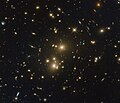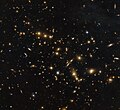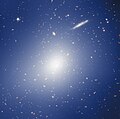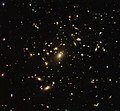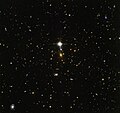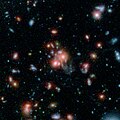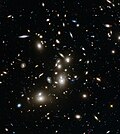
A galaxy cluster, or a cluster of galaxies, is a structure that consists of anywhere from hundreds to thousands of galaxies that are bound together by gravity, [1] with typical masses ranging from 1014 to 1015 solar masses. Clusters consist of galaxies, heated gas, and dark matter. [2] They are the biggest known gravitationally bound structures in the universe. They were believed to be the largest known structures in the universe until the 1980s, when superclusters were discovered. [3] Small aggregates of galaxies are referred to as galaxy groups rather than clusters of galaxies. Together, galaxy groups and clusters form superclusters.






